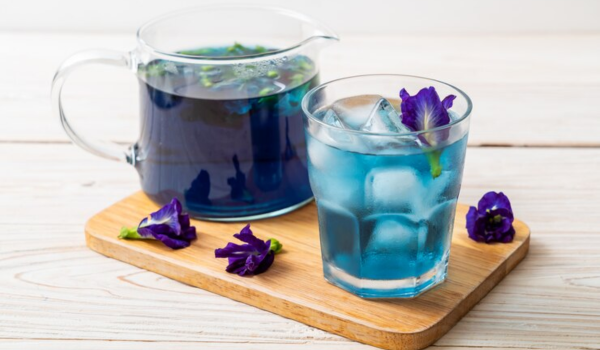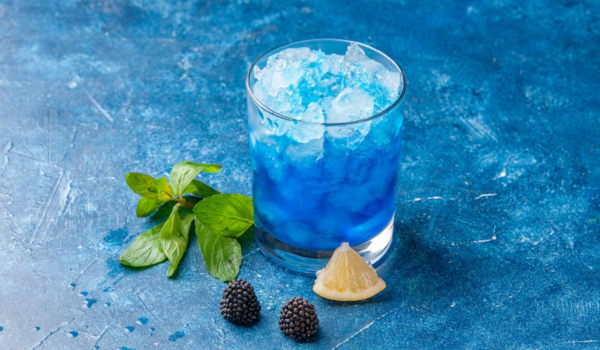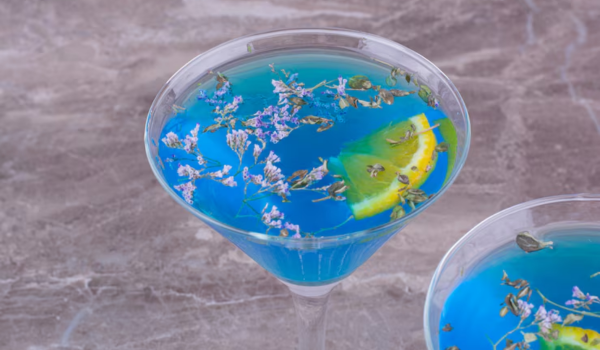Oriental Blue Tonic: Benefits, Recipes & Wellness Boost
Discover the Power of Oriental Blue Tonic: Benefits, Recipes, and How It Supports Your Wellness

In the world of modern wellness, few drinks have garnered as much intrigue and attention as the Oriental Blue Tonic.
Bright, beautiful, and packed with a history rooted in traditional Eastern medicine, this vivid drink has transitioned from ancient tea rituals to today’s TikTok feeds and wellness blogs.
But what exactly is it? What makes it so special? And more importantly, is it actually good for you?
Let’s explore the colorful world of Oriental Blue Tonic and find out if this trending beverage is truly a game-changer for health and longevity.
What is Oriental Blue Tonic?
The Oriental Blue Tonic is a vibrant, caffeine-free herbal drink typically made from butterfly pea flowers (Clitoria ternatea), known for their deep indigo color and antioxidant content.
The “oriental” descriptor often refers to the Asian origins of its ingredients, mostly Southeast Asia and parts of India and China where the drink has long been part of traditional wellness routines.
In recent years, it has become popular in the West, both for its visual appeal and the health benefits attributed to its ingredients, which are believed to promote brain health, improve skin quality, and support digestion.
Cultural Origins and Historical Use
Ancient Ayurvedic and Chinese Medicine Roots
The butterfly pea flower, the primary ingredient, is a staple in Ayurveda, the ancient Indian holistic healing system, as well as in Traditional Chinese Medicine (TCM). It has traditionally been used to:
- Enhance memory and focus
- Reduce stress and anxiety
- Support reproductive health
- Promote healthy skin and hair
In Thailand, it is often called Nam Dok Anchan and is served as a tea or tonic at the end of meals. Its color-changing property (from blue to purple with the addition of acid like lemon) adds to its cultural mystique.
Key Ingredients and Their Health Benefits
Let’s break down the ingredients commonly found in Oriental Blue Tonic and explore their scientifically studied benefits.
Butterfly Pea Flower
Health Benefits:
- Rich in anthocyanins (antioxidants)
- May support brain function
- Known for anti-inflammatory properties
- Improves eye health by enhancing night vision (per traditional use)
Lemon Juice
Health Benefits:
- High in vitamin C (immunity booster)
- Enhances iron absorption
- Helps alkalize the body
- Aids digestion and detoxification
Ginger (Optional Addition)
Health Benefits:
- Natural anti-inflammatory
- Supports digestion
- Fights nausea
- Enhances absorption of nutrients
Honey or Agave
Health Benefits:
- Natural energy source
- Antibacterial and antifungal properties
- Soothes the throat
- Adds sweetness without processed sugars
Here’s a simple, traditional-style recipe that can be
How to Make Oriental Blue Tonic: A Step-by-Step Guide
customized to your taste or health goals.
Ingredients:
- 1 tablespoon dried butterfly pea flowers (or 2 herbal tea bags)
- 2 cups of water
- 1 tablespoon fresh lemon juice
- 1 teaspoon grated fresh ginger (optional)
- 1–2 teaspoons honey or agave (optional)
Instructions:
- Boil Water: Heat the 2 cups of water until it reaches a rolling boil.
- Steep Flowers: Add butterfly pea flowers or tea bags. Let steep for 5–7 minutes.
- Strain or Remove Bags: Remove flowers or bags and allow the liquid to cool slightly.
- Add Ginger (Optional): Stir in grated ginger if you prefer a spicier tonic.
- Add Lemon Juice: Watch the magic! The drink changes from blue to purple.
- Sweeten (Optional): Stir in honey or agave to taste.
- Serve: Enjoy warm or over ice.

Scientific Insights Into the Ingredients
Several studies back the health benefits of the key ingredients in Oriental Blue Tonic:
Butterfly Pea Flower
- A 2019 study in BMC Complementary Medicine and Therapies found that extracts from Clitoria ternatea exhibited significant antioxidant and anti-inflammatory effects in lab models.
- A randomized trial also suggested improvements in cognitive function in older adults when used regularly.
Lemon
- Rich in vitamin C, lemons are proven to strengthen immunity and assist in collagen synthesis.
- Aids in digestion and may reduce the formation of kidney stones.
Ginger
- Research supports ginger’s effectiveness in reducing muscle pain and soreness.
- Its anti-inflammatory compounds (gingerols) have been shown to reduce symptoms of osteoarthritis.
Who Should Drink Oriental Blue Tonic?
Ideal For:
- Individuals looking for a caffeine-free alternative to tea or coffee
- Wellness seekers focused on natural antioxidants
- People looking to reduce inflammation naturally
- Those interested in mental clarity, focus, and mood regulation
Caution Advised:
- Pregnant or nursing women (consult a healthcare provider)
- Individuals taking blood thinners or anti-diabetic medications (butterfly pea flower may interact)
Where to Find Authentic Oriental Blue Tonic
If you’re not into DIY, there are several trusted brands that sell ready-made versions:
Recommended Brands:
- Anchan Blue Butterfly Pea Flower Tea – Organic and ethically sourced
- Numi Organic Blue Flower Tea – Known for premium quality
- Herbal Revival’s Oriental Blue Tonic Concentrate – Can be diluted into a drink or added to smoothies
Make sure to check for:
- Organic certification
- No added sugars or artificial colors
- Ingredient transparency
Should You Try Oriental Blue Tonic?
In an age where we are constantly seeking balance, immunity boosts, and stress relief, Oriental Blue Tonic offers a holistic, natural, and visually stunning option.
While it’s not a cure-all, its rich blend of antioxidants, calming herbs, and digestive aids make it a welcome addition to any health-conscious lifestyle.
Whether you make it at home or buy it ready-to-drink, this bright blue elixir lives up to the hype in both taste and benefits.
Advanced Uses and Creative Variations
One of the best things about the Oriental Blue Tonic is how versatile it is. Beyond sipping it as a hot or iced beverage, this wellness tonic can be integrated into a wide array of recipes and self-care routines.
A. Blue Wellness Smoothie
Add to your blender:
- 1 cup coconut water or almond milk
- 1 banana
- 1/2 cup frozen blueberries
- 1 tsp butterfly pea powder
- 1/2 tsp ginger
- 1 scoop plant-based protein (optional)
- Ice
Result: A thick, antioxidant-rich smoothie that supports brain function and immunity.
B. Sparkling Blue Mocktail
Ingredients:
- 1/2 cup Oriental Blue Tonic
- 1/2 cup sparkling mineral water
- 1 tsp lime juice
- Mint and citrus slices for garnish
Perfect for: Brunch, dinner parties, or as a refreshing alcohol-free alternative.
C. Ice Cubes for Skincare
Freeze leftover tonic into ice cube trays. These can be used as facial toning ice for:
- Refreshing skin
- Reducing puffiness
- Adding antioxidants topically
Always patch test before applying to sensitive skin.
How the Oriental Blue Tonic Fits into Holistic Health
A single tonic won’t fix your life, but when paired with consistent healthy practices, Oriental Blue Tonic becomes a meaningful component of a comprehensive wellness lifestyle.
Pair it With:
- Daily meditation: Calming herbs in the tonic can enhance relaxation.
- Intermittent fasting: Use it during fasting windows to curb hunger and aid digestion.
- Skin routines: Antioxidants in the tonic help from within, especially when paired with proper skincare.
- Brain exercises: Some users pair it with brain-training apps or puzzles, claiming better focus.
Add to:
- Anti-inflammatory diets
- Adaptogenic herb regimens
- Hydration-focused routines
How to Incorporate Oriental Blue Tonic into Your Daily Routine
- Morning Ritual: Start your day with a warm cup instead of coffee to avoid caffeine jitters.
- Pre-Workout: Drink chilled tonic for antioxidant support and mild energizing effects.
- Midday Reset: A refreshing iced tonic can replace sugary sodas and keep you hydrated.
- Evening Wind-Down: Add a little honey and ginger for a calming, digestion-friendly beverage.
- Skin Hydration: Use as a facial mist or ice cubes for topical antioxidant application.
Oriental Blue Tonic and Traditional Wellness Practices
Connection to Ayurveda
- Butterfly pea flower corresponds to balancing Vata and Pitta doshas, calming the mind and reducing inflammation.
- Lemon’s sourness aids Agni (digestive fire) stimulation.
- Ginger is a classic warming herb used to balance Kapha and strengthen digestion.
Connection to Traditional Chinese Medicine (TCM)
- Butterfly pea is thought to clear Liver Qi stagnation and nourish blood.
- Lemon adds cooling, detoxifying properties.
- Ginger provides Yang warmth and supports Spleen and Stomach functions.
These synergies create a holistic tonic aligned with age-old health paradigms.
Oriental Blue Tonic Recipes to Try at Home
1. Floral Citrus Refresher
- 1 cup Oriental Blue Tonic (cooled)
- 1 tbsp fresh lime juice
- Splash of sparkling water
- Garnish with edible flowers
2. Spiced Blue Chai
- Oriental Blue Tonic base
- Add cinnamon stick, cardamom pods, and a few cloves
- Sweeten with honey
- Heat gently and enjoy as a comforting tea
3. Tropical Blue Detox
- Oriental Blue Tonic
- Blend with pineapple chunks and coconut water
- Serve over ice

FAQs About Oriental Blue Tonic
Is the Oriental Blue Tonic safe for daily use?
- Yes, when made from pure, natural ingredients, most people can enjoy this tonic daily. However, individuals who are pregnant, nursing, or on medications should consult a healthcare provider.
Does the color change mean anything for health?
- The change from blue to purple with lemon juice is due to a pH reaction it’s not just fun, it’s educational! It signals the tonic’s natural properties and lack of artificial colors.
Will it help with weight loss?
- The tonic itself isn’t a magic bullet, but it can support weight management as part of a balanced diet by reducing inflammation, aiding digestion, and curbing appetite when sweetened naturally.
Can children drink it?
- In small amounts and without added stimulants like caffeine, yes. Always go with a gentle version and check with a pediatrician for younger kids.
Where can I buy butterfly pea flower?
Look for it at:
- Health food stores
- Asian groceries
- Reputable online retailers like Mountain Rose Herbs, Buddha Teas, or Amazon (check organic, non-GMO labels)
Comparison with Other Wellness Drinks
| Beverage | Benefits | Downsides | Best For |
| Oriental Blue Tonic | Anti-inflammatory, antioxidant-rich, natural color | May stain clothes, not very energizing | Focus, digestion, beauty routines |
| Green Tea | Metabolism, mild caffeine | Can dehydrate, bitter | Energy boost, metabolism |
| Turmeric Latte (Golden Milk) | Anti-inflammatory, calming | Heavy on spices | Joint pain, relaxation |
| Kombucha | Probiotic-rich, fizzy | Sugar content, fermentation-sensitive | Gut health |
| Celery Juice | Hydrating, low-calorie | Acquired taste | Detox and hydration |
Oriental Blue Tonic in the Wellness Marketplace
This tonic is now featured in wellness cafés, juice bars, yoga retreats, and even in luxury spa menus. Here’s why it continues to trend:
- Instagram appeal – The vivid blue and color-shifting presentation are social media gold.
- Minimalist ingredients – Wellness-minded consumers love the short, clean label.
- Cultural allure – A blend of Ayurveda, TCM, and Thai traditions draws in global health seekers.
- Functional benefits – Focus, calm, and beauty in one glass.
Many health influencers and naturopaths now recommend it as a natural midday pick-me-up or nighttime wind-down ritual.
Conclusion
If you’re seeking a beautiful, versatile, and functional addition to your wellness routine, Oriental Blue Tonic is absolutely worth exploring.
It’s a rare combination of:
✅ Aesthetic charm
✅ Nutritional value
✅ Cultural richness
✅ Ease of preparation
✅ Potential brain, skin, and digestive benefits
And perhaps most importantly: it’s safe, affordable, and adaptable. You can make it your own by modifying ingredients, serving styles, or combining it with complimentary wellness habits.
So yes for most people, the Oriental Blue Tonic is not just a trend, it’s a tradition with staying power.
.